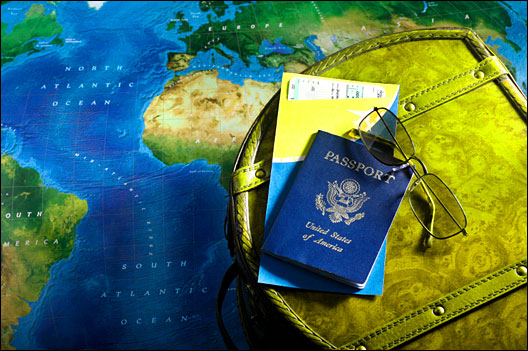
Everyone needs to take a break from the stresses of life, and environmentalists are no exception. After all, vacations are a necessary part of any sustainable lifestyle. And while vacation time itself can be hard to come by, your getaway needn’t be hard on the planet.
There are plenty of ways to green your vacation, whatever your budget and whatever your destination. Whether it’s a close-to-home romp in the outdoors or a spendy retreat halfway around the globe, there’s no shortage of ways to see the world — while lessening your impact at the same time.
Here’s how to start.
Level One: The Baby Step
Ready, offset, go. If you’ve already got vacation plans in place, and that Tahitian spa simply won’t refund your money, the simplest way to help green your trip is to offset some of its eco-impacts. Emissions from flying there, flying back, and whatever you do in between can be balanced out — if not karmically, then at least mathematically. Plenty of organizations will calculate your trip’s emissions and offer environmental indulgences to put it all right again. If you believe the hype, there’s no need to change your itinerary, just your ‘tude.
And hey, if you’re short on cash and struggling to make sense of which offsets are best and where your funds are going, consider a DIY offset. In its simplest form, you could green some other aspect of your life and call it even. Just be sure to check your math — and your conscience.

Aviation: avoid it.
Level Two: The Next Steps
Just plane avoidance. Air travel is a nasty business, and it’s one of the fastest-growing sources of carbon emissions worldwide. Avoiding trips that require air travel may be the biggest way to ease your vacation’s overall eco-impact, and as a bonus, you won’t have to endure those stomach-wrenching in-flight movies. On a per-person, per-mile basis, driving an average car with at least two passengers in it creates about half the emissions of flying to the same place.
Be a good ‘sport. Whatever mode of transport you take to your destination, once you get there you’ll definitely want to take a look around. And nothing says “I’m a savvy traveler” like using public transportation, walking, or biking. However, if you aren’t a savvy traveler — or are directionally impaired — you might want to look for green-leaning group-tour options that make use of buses and other forms of mass transit. If your plans can’t or won’t fit the no-car option, look for the most efficient vehicle on the scene. A growing number of car-rental agencies in the U.S. offer hybrid options.

Trinket over carefully.
Think globally, consume locally. What drew you to your particular destination? Chances are it was a local attraction, whether that means a spectacular natural feature or just your misanthropic relatives. So extend your local thinking: Look for locally produced foods and regional cuisine, as well as sustainable, locally made gewgaws. Local businesses and artisans will thank you, and you’ll lighten your vacation’s eco-footprint by avoiding purchasing food and objects shipped from far, far away. While 63 percent of travelers count shopping among their activities, the consumption-wary might consider weaning themselves off trinket-y souvenirs altogether — after all, what are you really gonna do with all that junk inside your trunk?
Even when you can’t help yourself, you can help. If you simply can’t control your lust for far-off places and you want to do more than just offset your emissions, consider a working vacation on behalf of the planet. The Sierra Club offers volunteer vacations where travelers do everything from trail maintenance to eradicating non-native plants, and Earthwatch Institute’s working vacations let volunteers choose from a variety of trips helping scientists with wildlife, climate change, and ecosystem research. Other options are out there too — just take a look around.

Vacation is a state of mind.
Level Three: The Big Step
Stay put. Anyone who’s traveled extensively knows that “over there” can be terribly overrated. After all, for creative vacationers, adventure lurks around every corner, even those that aren’t so far away. So here’s a brain stretcher for you: To really lighten your vacation’s environmental load, be a tourist close to home. Take another look at local tourist destinations, close-by national parks and monuments, forests, and wildlife refuges, or whatever unique regional attractions excite your inner vacationer. Or stay home and tend to the garden, fix-it projects, or that stack of books you’ve been meaning to get to. You may well find it more relaxing than gallivanting all over the place. And after all, if the world is your backyard, your backyard is also the world. Explore it!
Resources
Green vacation advice from the Grist archives
Ask Umbra on vacations
Ask Umbra on cruises
Ask Umbra on alternatives to flying
Carbon offset providers and info
NativeEnergy
Carbonfund
TerraPass
Grist Guide to Offsetting Your Carbon Emissions
Info on air travel emissions
Sightline Institute
Worldwatch
Ask Umbra on cars versus planes
Eco-themed volunteer vacations
Sierra Club
Earthwatch Institute
National parks, monuments, and forests
National Park Service
U.S. Forest Service
National Fish & Wildlife Service

